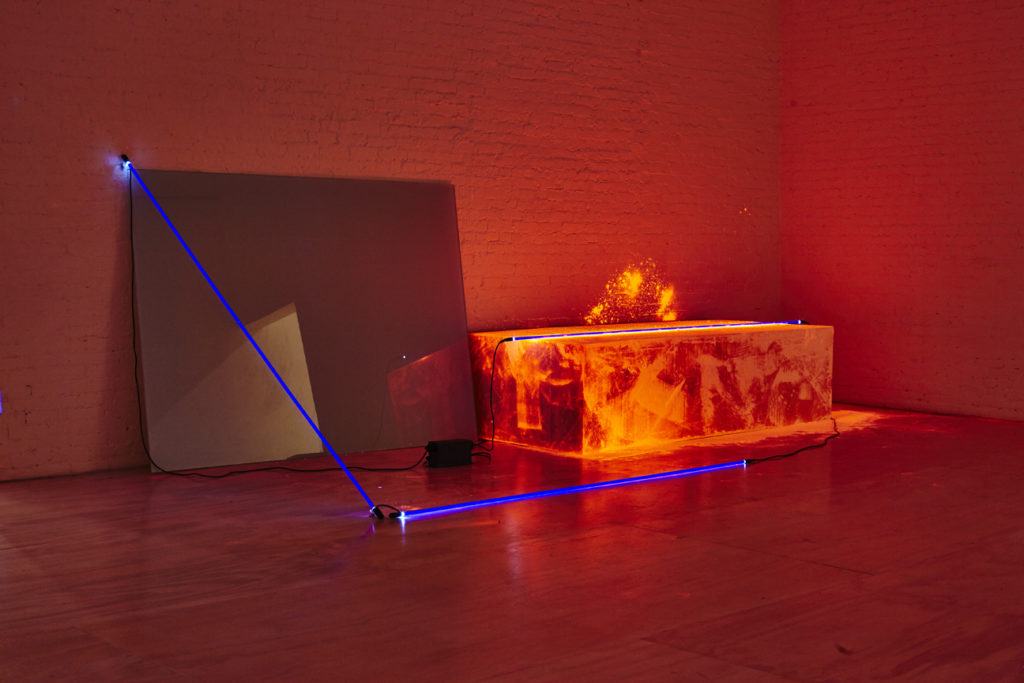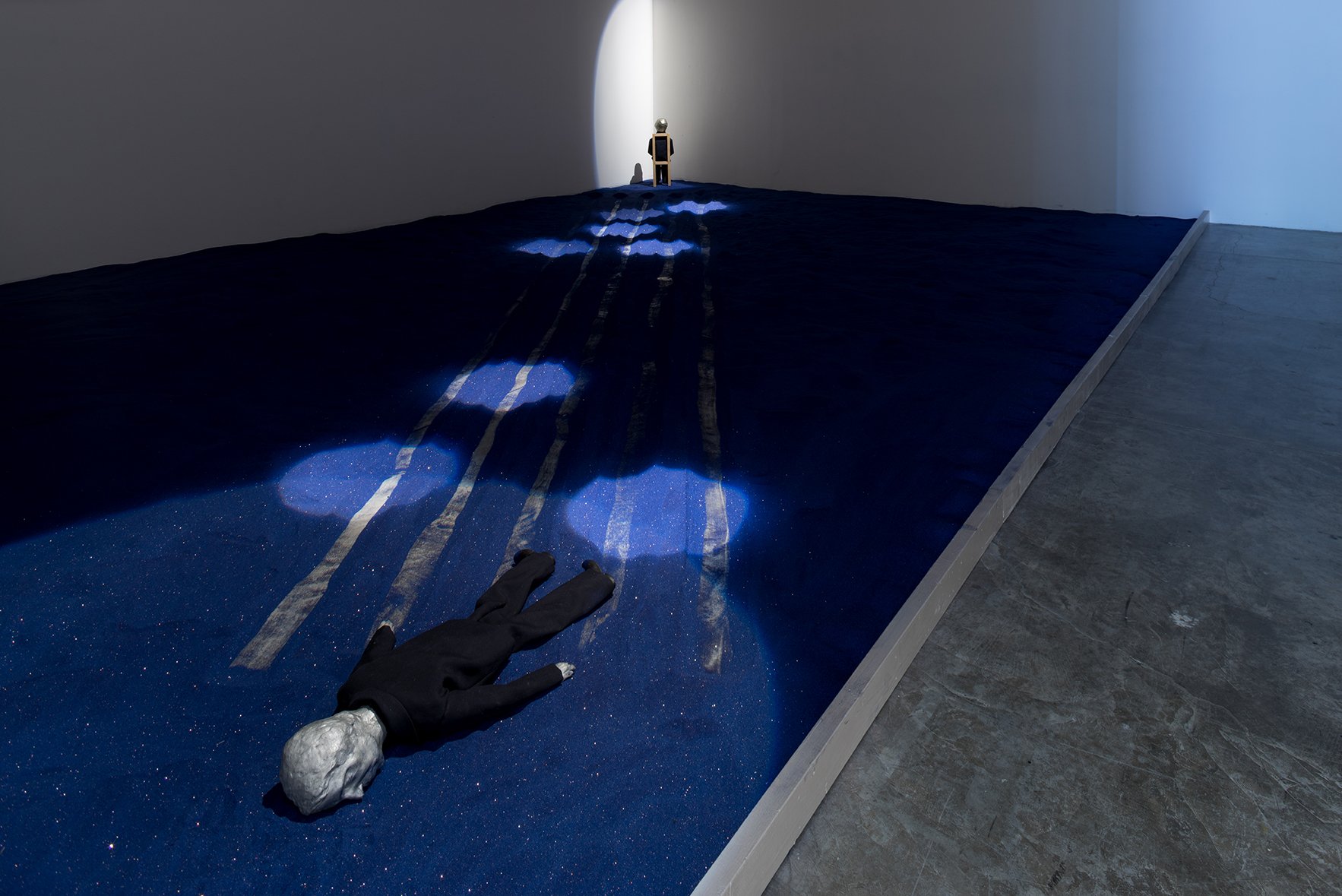Reviews
Fame-Obsessed ‘Forty’ at MoMA PS1 Shows an Alternative Art Scene That No Longer Exists
The original alternative spaces movement captured the era’s raw-nerved energy.

The original alternative spaces movement captured the era’s raw-nerved energy.

Ben Davis

PS1 began as the Institute for Art and Urban Resources, in a city mired in a nasty financial crisis. Throughout the 1970s and ’80s, Alanna Heiss’s risk-taking nonprofit was a major force in the “alternative spaces” movement, and the art she presented looms large in the contemporary imagination. It’s important, today, to reckon with its legacy.
This summer, to celebrate its birthday, PS1 (now MoMA PS1) has brought back its founding director to curate “Forty,” a love letter to its early legacy. The thing is, though, a love letter might not be the best place to look for a real critical reckoning with the past.
The show, taking over the second floor of PS1, is a kind-of-sort-of tribute to “Rooms,” the legendary first show from 1976, back when it really was a scrubby old schoolhouse, not the dressed-down, hipper-than-thou annex of MoMA that it is now.

Nam June Paik in “Forty” at PS1. Courtesy of Ben Davis.
Overall, the vibe of the art here is inscrutable and scrappy. There’s plenty of charm nestled away in PS1’s various nooks, from Nam June Paik’s witty sculpture of a candle framed in an old-style TV tube, to Colette’s voluptuous, grotto-like environment, or Dennis Oppenheim’s tableaux that evokes a spooky marionette crime scene.
Still, when you really think about it, what all this is meant to mean is a little mysterious. Heiss has brought back just 28 of the nearly 80 participants from that first show, from John Baldessari to Lawrence Weiner. She then threw in 15 other artists, apparently because they were also part of PS1’s early scene, including Lynda Benglis and David Hammons.

Installation view of Broken Record Blues by Denis Oppenheim in FORTY. Image courtesy of MoMA PS1. Photo by Pablo Enriquez.
The selection criteria appears to be mainly what you’d think it is: fame. Heiss gives us a selection of her most celebrated associates, leavened with a smattering of figures who feel a bit more personal to her, like Richard Nonas, whose giant minimalist metal floor piece is the only work presented in the exact same location from “Rooms,” and Marcia Hafif, a painter who scribbled directly on the unused blackboards of the school for the original show, and here returns to that idea, but with a new narrative, about aging.

David Hammons in “Forty.” Courtesy of Ben Davis
“Forty” is basically the exhibition equivalent of someone chatting at you about their glory days—literally, in that the key installation device is a series of brief, breezy audio interviews (which you can listen to online) between Heiss and the artists.
In taking this celebrity approach, “Forty” in some ways obscures the alternative spirit of the “alternative spaces” movement that made PS1 important in the first place.
When Artforum reviewed the original “Rooms” show, the title of the article was “Apotheosis of the Crummy Space.” The key quality observers noted in New York’s early alternative spaces like 112 Greene Street/Workshop and PS1 was not just their independence, but the gritty nature of the venues. This stood out at a time when galleries were still mainly townhouses, implicitly offering illustrations of how wealthy people might live with art in their mansions, however experimental that art might be.

A work by Robert Ryman [right] in “Forty” at PS1. Courtesy of Ben Davis.

Installation view of Doug Wheeler’s work in “Forty.” Courtesy of Ben Davis.
You get a taste of this sensibility with Doug Wheeler’s contribution here, which seems at first to be simply a bare room. Then you notice that the windows have been tinted, with each successive one a little clearer until one is just an empty frame opening to the outside.

Installation view of Michelle Stuart at PS1. Courtesy of Ben Davis.
Michelle Stuart’s large, unframed graphite pieces look like ghostly geometric abstractions, but are rubbings, registering the moldings and raw edges of the original PS1 architecture at the time of “Rooms.” Yet these are quite literally records of a texture that is now lost, which makes you realize the degree to which this art played off of the excitement of this once-gritty setting.
By all accounts, the original “alternative spaces” movement captured the era’s raw-nerved energy. Only the year before “Rooms,” the Daily News summed up the ambient sense of abandonment with its famous headline, after the president had denied federal assistance to stave off bankruptcy: “Ford to City: Drop Dead.”
Even then, though, at the beginning of that decade, the gentrification of SoHo had showed that artists could play a part in urban change, making deindustrialized grit chic. “SoHo, the true grit area pioneered by artists, threatens, to their horror, to become the status address of upper Bohemia,” New York magazine had written in 1974.
To some, “Forty” will feel a bit belated, given that PS1’s recent “Greater New York” survey looked back on the same art-historical territory for inspiration. But that show, in its juxtaposition of ‘70s art with more of-the-moment fare, seemed calculated to make you at least ask the question of what that tradition meant today.
In the present context, the key factor when it comes to “art and urban resources” isn’t a surplus of abandoned space, but, as the press release for “Greater New York” put it, a “voracious real estate market that poses particular challenges to local artists.” The abandonment crisis of the ’70s finds its Bizarro world distorted reflection in today’s affordability crisis.

Daniel Buren intervention into the window in “Forty” at PS1. Courtesy of Ben Davis.
It is worth reexamining what this “alternative space” movement’s brainy romanticization of urban grit means in our current climate. Gordon Matta-Clark has a starring role in “Rooms,” “Forty,” and “Greater New York” alike. But his experimental art, obsessed with activating cast-off spaces and riffing on the tropes of real estate, must read very differently, 40 years on, against the background of, say, last year’s “Bronx Is Burning” event, when a high-end developer mobilized art for an urban-decay themed party, complete with bullet-ridden cars and trashcan fires, to help rebrand yet another area of the city for luxury living.
That doesn’t mean we have to discard this tradition, or that its spirit offers nothing in the way of inspiration. But it does mean that its context is important to explain, explore, and expose—all the more so in that the art in question was so heavily engaged with its context. In this case, the halo cast around the past may be blinding us to the present.
“Forty” is on view at MoMA PS1, from June 19 to August 28, 2016.